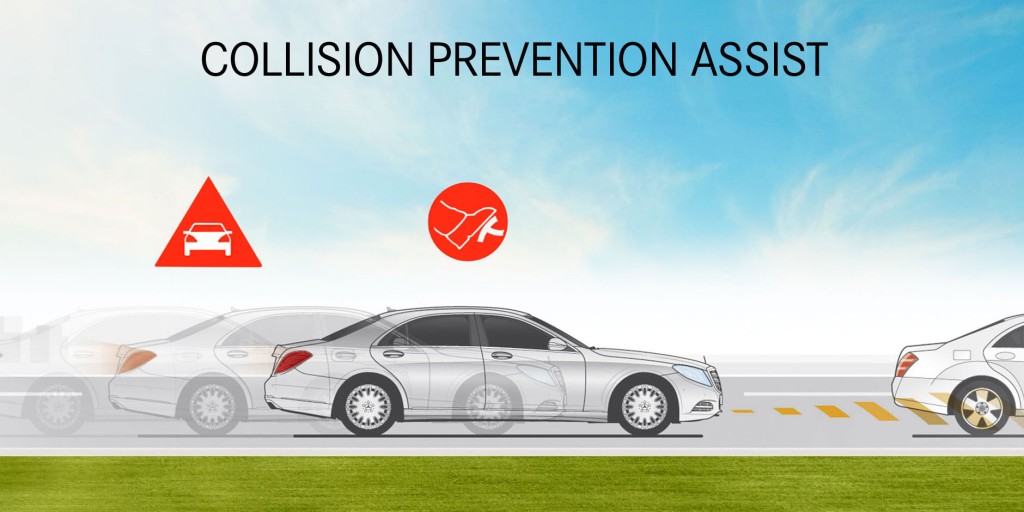Mercedes-Benz holds over 85,000 patents for the automobile most of which are safety related. Through the introduction of these numerous pioneering safety solutions and technologies, Mercedes-Benz continues to define new standards for vehicle safety. One of the latest to be introduced is Collision Prevention Assist Plus or CPA+ for short. A part of the larger Intelligent Drive System, CPA+ adds autonomous braking to the current Collision Prevention Assist System.
Category Archives: Safety
Mercedes-Benz Rescue Assist
Mercedes-Benz introduced Rescue Assist in 2014, a first of it’s kind safety advancement to help save lives. Starting on all vehicles produced from November 1, 2013 and can be retrofitted to vehicles dating back to 1990 (Please see your local dealer for details). Mercedes-Benz installs a QR code inside the gas flap that first responders can scan to let them know battery location, airbags and other structural elements in the event of an emergency. See the video below for more information.
Electronic Stability Control
Twenty years ago this month Mercedes-Benz first introduced the technology that has become the Electronic Stability Program that is now required on all cars sold in the United States. The technology is designed to reduce understeer and oversteer by braking individual wheels or cutting engine power when necessary.
Vehicle 2 Vehicle Communications
Last month Mercedes-Benz Research and Development North America and the U.S. Department of Transportation launched the largest connected vehicle field in the world in Ann Arbor, Michigan. Over 2800 passenger, commercial, and transit vehicles were being fitted with 5.9GHz Dedicated Short Range Communications (DSRC) radios.
Mercedes-Benz, being a pioneer in automovite safety, considers innovations based on the 5.9Ghz DSRC technology, in combination with invehicle Advanced Driver Assistance Systems as an important step towards accident free driving.
The passenger vehicles have an LED indicator on the dashboard that will illuminate if an impending collision exists. The commercial vehicles display warnings through tablet devices installed in the cockpit. Local Ann Arbor residents will drive these vehicles over the course of a year, while researchers collect and analyze data to assess the systems effectiveness.
Mercedes-Benz continues to collaborate with government agencies and other manufacturers both in the U.S. and Europe and is currently heading up a similar project in Germany.
New ML and C Coupe receive 5 stars on latest Euro NCAP safety tests
Five stars for new B-Class, new M-Class and C-Class Coupé: Euro NCAP: three more Mercedes-Benz model series with best grades for safety
Three new model series from Mercedes-Benz have passed crash tests based on the European NCAP procedure (New Car Assessment Programme) with flying colours. The B-Class, M-Class as the best in each of their vehicle classes, and the C-Class Coupé consequently get the top rating of five stars for outstanding occupant protection. In addition, Mercedes-Benz receives several Euro NCAP Advanced prizes for safety innovations including PRE-SAFE® and the radar-based collision warning system COLLISION PREVENTION ASSIST in the B-Class.
“The Euro NCAP awards are a striking recognition of the safety level of our vehicles, and we’re very happy about them,” stated Ulrich Mellinghoff, Head of Mercedes Safety Development. “But the standardised crash tests cover only a small part of the real course of events leading up to and during road accidents. For this reason Mercedes-Benz designs all model series employing some 40 different accident constellations, most of which we define based on the experience of our in-house accident research. Additionally, focusing on anticipatory systems and accident avoidance we equip our vehicles with systems which are not even taken into account in the rating.” Continue reading
Importance of LED Tail Lights
Q) Why are LED tail lights so important?
A) It’s all about safety.
Q) Well how does an LED light make my car safer?
A) The advantage of LED tail lights is that they illuminate 1/10th of a second faster than traditional bulbs. Doesn’t sound like a big deal does it? I will go through the math portion of it then give you a visual.
A car traveling at a rate of 60 miles per hour is covering 88 feet/second. When brakes are applied to a car with LED lights it has an 8.8 feet visible brake light advantage over a car with traditional lights. In simple terms the person following behind you sees your brake lights come on sooner than later. Here’s the visual…
Go to the rear bumper of your car, step out 8.8 feet in the direction of your front bumper to see what that looks like. I think you’ll find it’s quite a scarry thought. Amazing what a 1/10 of a second actually means in the grand scheme of things.
Passenger Safety Cell Patented
Maximum safety with optimum driving pleasure: The new Mercedes-Benz SLK – lifting the lid on safety
Stuttgart – In January 2011, Mercedes-Benz will be launching the new SLK. The agile sports car will feature a new, exciting design, exceptionally high levels of comfort for a roadster, as well as plenty of open-air driving pleasure. At the same time, it will also set new standards for open-top sports cars in terms of safety. The third generation of the trendsetter will make use of a whole host of the latest assistance systems to support the driver, including the drowsiness detection system ATTENTION ASSIST, developed by Mercedes-Benz and fitted as standard; the optional occupant protection system PRE-SAFE®, which is unique in the world; and the PRE-SAFE® Brake, which can apply the brakes autonomously in the event of an impending front-end collision. As such, with the SLK too Mercedes-Benz is consistently and significantly exceeding the requirements imposed by safety standards. Continue reading

